Polypropylene or plastic pipes: a comparative overview and the choice of the best option
Often, for the installation of heating systems, hot water and cold water, domestic plumbers prefer to choose pipes made of metal or polypropylene. Each of these products has its own advantages. Both are characterized by high strength, corrosion resistance and flexibility. But which option is better?
In this article we will try to figure out what is best to take for independent installation of pipelines for various purposes - polypropylene or metal-plastic pipes, considering their technical characteristics and features.
The information presented by us is supplemented by visual photos and detailed videos with an overview of the differences and features of the installation of a pipeline made of metal-plastic and polypropylene.
The content of the article:
Features of plastic pipes
Products from aluminum-polyethylene metal-plastic combine the best sides of plastic and metal. Comparing them with a polypropylene competitor, it should be understood that the price per linear meter in both cases is approximately equal.
However fittings for metal much more expensive than those used in the installation of pipelines from PPR.
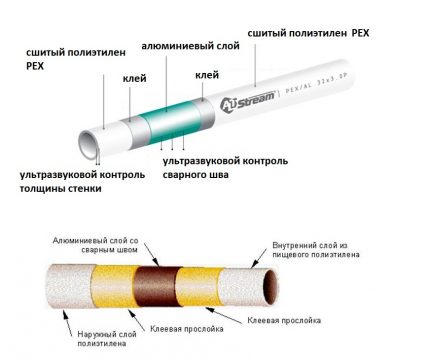
“Crosslinking” of polyethylene occurs during its production at the level of molecules. There are no seams or stitches of threads there. There are three main technologies for the manufacture of this plastic, indicated in the labeling of pipe products PEX-A, PEX-B and PEX-C.
These nuances of production do not have a special difference in the final characteristics of the pipe. It is more important that the manufacturer observes the PEX technology itself.
And the buyer on the label needs to pay more attention to the indicated nominal pressure (PN) and wall thickness. The purpose of the product and its operating parameters largely depend on these two numbers.We talked in more detail about the assortment and technical characteristics of metal-plastic pipes in this article.
A thin layer of aluminum between the inner and outer layers of PEX is used for:
- partial compensation of thermal expansion of the pipe;
- the formation of a diffusion barrier.
Cross-linked polyethylene was originally designed for high operating temperatures up to +95 ° C. However, when heated, it begins to expand slightly. To compensate for this expansion, an aluminum tab is made between the two polyethylene layers. The metal takes over most of the stress arising in the polyethylene through the adhesive layer, preventing the plastic from expanding and deforming too much.

Among the advantages of metal-plastic pipelines, it is worth highlighting:
- lack of stray currents;
- constancy of the cross section;
- lower noise in comparison with metal analogues;
- lack of expansion of plastic (sagging pipes) as a result of heating water in them;
- ease of installation of the pipeline system.
The symbiosis of metal and plastic is able to withstand a short-term increase in the temperature of the water inside to +115 ° C. And plus 95 degrees Celsius - for him the norm.
Metal-plastic pipes are ideally suited for hot water systems, "warm floors" and heating. Thanks to them, the aggressive effect of oxygen on a variety of hydraulic pumps, as well as heating boilers and radiators, can be minimized.
Among the negative sides of metal-plastic pipes are:
- aging of polyethylene in direct sunlight;
- the need for a grounding device for plumbing with a metal housing, asplastic is a dielectric;
- the need to pull fittings one year after the introduction of the pipeline system into operation.
Metal-plastic pipes must be hidden behind the finish from direct sunlight, otherwise their service life will be drastically reduced. A tightening of the fittings is required due to temperature deformations of the pipeline, which is simply impossible to completely get rid of.
And the main drawback is that metal-plastic cannot be frozen. Due to such sudden changes in temperature, it can trite apart at the seams.
Characteristics of polypropylene products
If the metal-plastic according to the internal structure is a composite of several layers, then the polypropylene pipe is completely plastic.
The only exceptions are products with reinforcement in the form of perforated aluminum foil. And even the foil layer does not stick together with plastic in them, as in the competitor considered above, but is soldered into plastic.
Polypropylene pipes in stores are found in four versions:
- PN10 (1 MPa) - for cold water with a water temperature of up to +20 ° C and a "warm floor" with a working temperature of up to +45 ° C.
- PN16 (1.6 MPa) - for cold water and hot water with temperatures up to +60 ° С.
- PN20 (2 MPa) - for hot water supply (up to +80 ° С).
- PN25 (2.5 MPa) - for hot water supply and central heating pipelines with a coolant temperature of up to +95 ° С.
Lack of glue and monolithic plastic (even in the case of reinforcement) make the pipe product made of polypropylene more durable. Here, this option is superior to metal plastic.
PPR pipes are available in gray, green, white and black colors. In the first three cases, this is just a coloring to simplify the wiring. A black color means that the product contains additives that protect it from ultraviolet radiation.
In a metal-plastic pipe, the aluminum layer in the thickness of the polyethylene wall is approximately in the middle. And in a PN25 polypropylene product, aluminum is biased toward its outer side. In this case, this layer performs exclusively reinforcing functions.Often, aluminum is replaced with fiberglass, which copes with the task of amplification no worse.
To read in more detail about the characteristics, assortment, types and features of polypropylene pipes and fittings used for their installation, go to this link.
The connection of polypropylene pipes is made by soldering using a special soldering iron. Even with a little practice, working with him is easy. However, there is one caveat - if the temperature of the polypropylene at the junction is too low or too high, then the connection will turn out to be fragile.
At the same time, the probability of underheating of plastic and associated leaks increases sharply when working in the cold. At minus temperatures, installation of PPR pipes is generally prohibited. Manufacturers recommend assembling polypropylene pipelines only in rooms where air is warmed above +10 ° C.
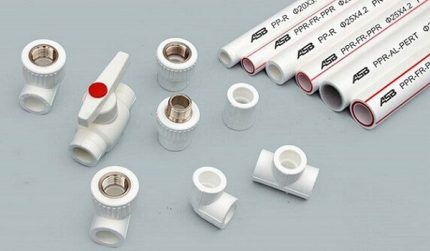
In terms of advantages and disadvantages, polypropylene is generally similar to metal plastic. The only exception is thermal expansion. As the temperature rises, the PPR pipe begins to deform. It is from heating that the plastic expands, but in this case there is nothing to compensate for this expansion.
The pipes eventually sag. Moreover, they can not only sag, but also rest against a turn or an end with a cap on the wall. And then the destruction of the pipeline is possible. When installing PPR, this feature is important to consider, providing for compensating elements and sliding supports in the wiring diagram.
Comparison of metal and polypropylene
To determine whether a metal-plastic pipe is better or polypropylene, it is necessary to consider both options carefully from all sides. In some cases, the best choice is metal plastic, and in others - polypropylene. It all depends on the specific installation and operation conditions of the future pipeline.
Criterion # 1 - pipe performance
In terms of plasticity, polypropylene is somewhat stiffer than metal plastic. The second pipes are easier to bend, which simplifies their transportation and laying. This rigidity is associated both with the hardness of the plastic itself and with the thickness of the pipe walls made of it. With the same performance characteristics, polypropylene products are thicker than metal-plastic ones.
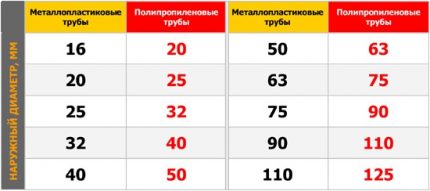
Unlike polypropylene pipes, metal-plastic pipes are bent. It is them that it is recommended to use when installing a “warm floor” with laying it with a spiral without additional connections at the corners.
If you assemble such a heating system from polypropylene, you will have to perform every bend using corner fittings. And these are additional points of potential breakthroughs.
In both cases, the inner coating of the pipes remains smooth, regardless of the hardness of the water or coolant inside and the flow temperature. Clogging as a result of the formation of deposits in plastic pipelines is virtually eliminated.
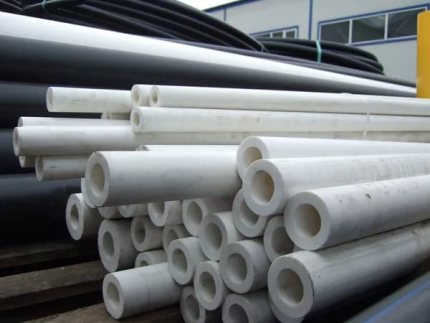
When comparing the working pressure, you need to look at the temperature of the water inside. If the latter is heated to +20 ° C, then both types of pipes can withstand up to 25 atm. Here, polyethylene is equal to metal plastic. However, in the case of heating systems, the situation is somewhat changing.
With increasing temperatures, the polyethylene pipe begins to lose the metal-plastic. The first one, when heated to 80–90 ° С, can withstand no more than 7 atm, and the second one will not break through even at 10 atm.
Criterion # 2 - operating temperatures
According to this parameter, metal plastic has a slight advantage. He is able to withstand up to +115 ° C at maximum. For polypropylene, the maximum temperature is only 95-100 ° C. However, there is one caveat.
The metal-plastic pipe is capable of withstanding the high temperatures of the hot coolant from the boiler for a long time. At the same time, her service life reaches 50 years. A polypropylene analog will last up to half a century under such loads only if this product is PN25.
If even too hot water is added to a pipeline of PPR PN10 or PN16 at high pressure, then its life will be 3-4 years. These versions of polypropylene pipes are not originally intended for heating systems with elevated coolant temperatures.

In terms of frost resistance, both types of pipes are comparable. That is, it is not worthwhile to allow freezing of water in them from the word "never." If polypropylene can still withstand a small short-term expansion due to the formation of ice inside, and then return to its original state, then metal-plastic will freeze immediately upon freezing of the water supply system.
The main advantage and the main problem of metal-plastic pipes is their multilayer structure. It makes these products more resistant to high temperatures. However, it can also lead to delamination of the metal from plastic during sharp temperature changes.
Aluminum and polyethylene have different expansion rates. With a sharp jump in temperature, the adhesive layer simply does not have time to transfer stress from one material to another. As a result, the metal plastic delaminates, the pipe simply breaks. This can happen both with a sharp heating of water in the pipeline, and with its sudden freezing. Plus, in the latter case, there is also the danger of a gap in the aluminum layer along the weld.
Criterion # 3 - installation methods
To assemble the pipeline, you will need a pipe cutter for polypropylene or metal plastic. Both polypropylene and metal-plastic pipelines according to the connection technology belong to one-piece systems.
To connect pipes made of metal-plastic, only fittings are used, for the installation of which three technologies are used:
In the first case, polypropylene fittings are used for soldering, and in the second, crimp couplings and press fittings are used.It is impossible to disassemble the water pipe assembled using these elements, and then reinstall it in the previous configuration.
We have a website detailed review installation methods for metal pipes, where special attention is paid to the rules for making reliable joints.
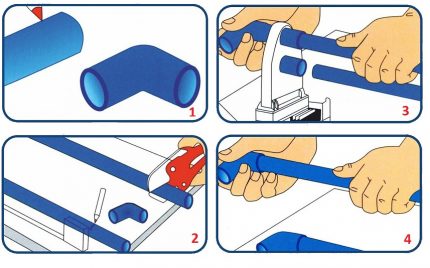
Polypropylene pipelines greatly outperform metal-plastic pipelines in quality and reliability of the connection. After heating and cooling of the polypropylene between the fitting and the pipe, a chemically uniform monolithic joint is formed, subject to compliance welding rules. It is almost impossible to break such a connection with your hands or with water pressure.
But this applies only to water supply systems, which are connected in compliance with all the norms of technology. When overheating or underheating of polypropylene with a soldering iron, the joint inevitably turns out to be fragile, it will not last for a long time. And as a result - leaks and repairs to the finish. Therefore it is so important to choose correct soldering temperature.
Systems made of polypropylene pipes are more complex in structure and in the number of connecting elements used. As metal-plastic, they can not be bent. Each turn of the pipeline must be done with the help of corners and tees. However, such fittings are several times cheaper than analogs for joining metal-plastic.
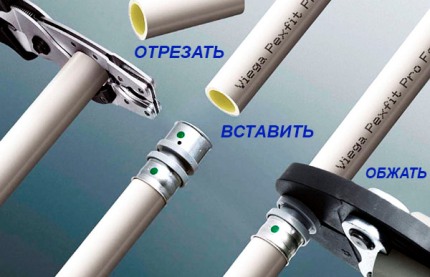
If a metal-plastic pipeline is planned to be laid under the screed on the floor or monolithic in the wall, then it should be assembled exclusively with press fittings. They are more reliable than couplings with crimping nuts and do not require subsequent tightening.
Conclusions and useful video on the topic
To make it easier for you to understand all the nuances of the choice between polypropylene and metal-plastic, we have selected several video materials with a description of pipes from various materials and the features of their installation.
Overview - which is better metal or polypropylene:
Comparison of various plastic pipes:
Features of the installation of heating systems from metal-plastic and polypropylene pipes:
Choosing between a metal-plastic and polypropylene pipe, it is necessary to determine in advance the further finishing and installation method.
If a “warm floor” is being made, then it is better to buy metal-plastic with reliable press fittings. And for the plumbing in the apartment’s bathroom, polypropylene cheaper in materials and assembly is quite suitable.
Choose between metal-plastic and polypropylene and want to clarify certain nuances? Perhaps we did not touch upon a question of concern to you in this article? Ask our experts for advice - write your comments in the block below.
Or maybe you want to supplement our article with useful recommendations from practice or share your observations? Write your comments - many beginners will benefit from your experience.

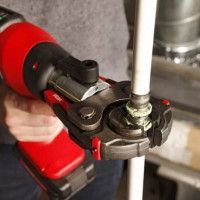 Fittings for plastic pipes: types, applications, an overview of the best manufacturers
Fittings for plastic pipes: types, applications, an overview of the best manufacturers 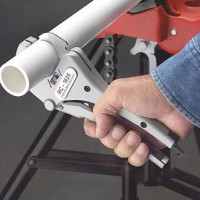 Scissors for cutting polypropylene pipes: species overview + instructions for use
Scissors for cutting polypropylene pipes: species overview + instructions for use 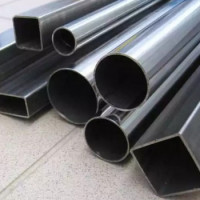 All about steel pipes: an overview of technical specifications and mounting nuances
All about steel pipes: an overview of technical specifications and mounting nuances 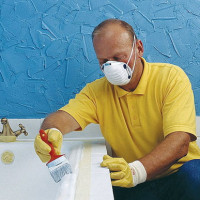 How to choose enamel for bath restoration: a comparative overview of popular products
How to choose enamel for bath restoration: a comparative overview of popular products 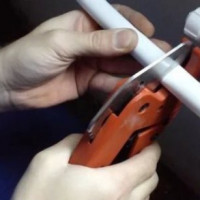 Pipe cutter for polypropylene pipes: an overview of the types of tools and features of working with it
Pipe cutter for polypropylene pipes: an overview of the types of tools and features of working with it 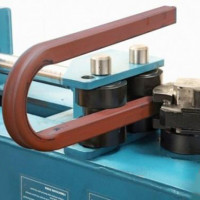 How to build a pipe bender for your profile pipe yourself: an overview of the best homemade products
How to build a pipe bender for your profile pipe yourself: an overview of the best homemade products  How much does it cost to connect gas to a private house: the price of organizing gas supply
How much does it cost to connect gas to a private house: the price of organizing gas supply  The best washing machines with dryer: model rating and customer tips
The best washing machines with dryer: model rating and customer tips  What is the color temperature of light and the nuances of choosing the temperature of the lamps to suit your needs
What is the color temperature of light and the nuances of choosing the temperature of the lamps to suit your needs  Replacement of a geyser in an apartment: replacement paperwork + basic norms and requirements
Replacement of a geyser in an apartment: replacement paperwork + basic norms and requirements
The information is excellent.I did not know that these metal-plastic pipes are torn apart by a temperature difference. Does this mean that if the apartment turned off the hot water and then turned it on, then the pipe is at risk? And it is not clear how to check when soldering: pipes and fittings are connected at a temperature of sufficient height? Could you share this moment as urgently as possible! They put 2 risers made of metal-plastic on hot water - after turning on the hot water, the pipes bent, although nearby they put cold water from simple polypropylene - even. A pipe made in Turkey from a company store. The sizes were selected exactly.
Your apartment does not have minus temperatures, so the difference will not be very sharp. Especially if, as usual, they turn off for a short time. There is no risk of pipe rupture in this case.
It is difficult to work with polypropylene and there are few workers who know how to work with it. You can install and connect everything beautifully, but you can do it ugly. In our village on the first floor the pipes are hidden under the floor, and on the second floor, attic, they are inside the room. On the second floor it is clear that they all went in a wave, many came down from the mounts. So if we do the heating in our house, we will hide the pipes.